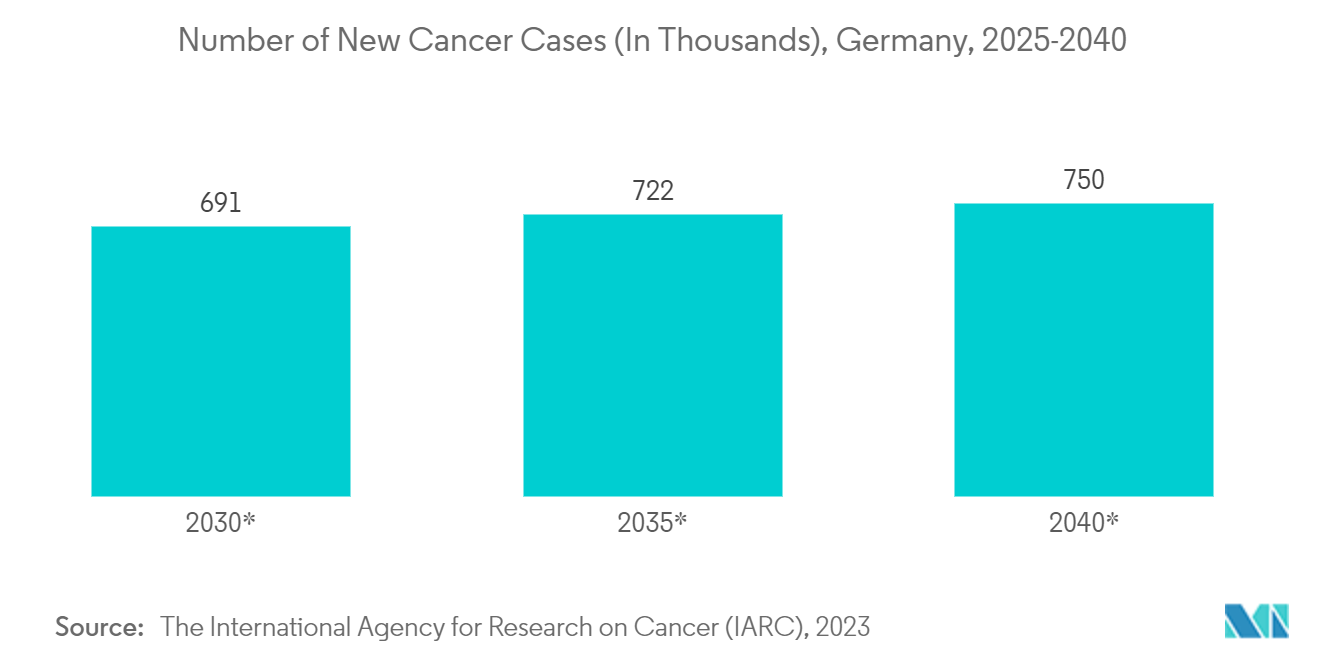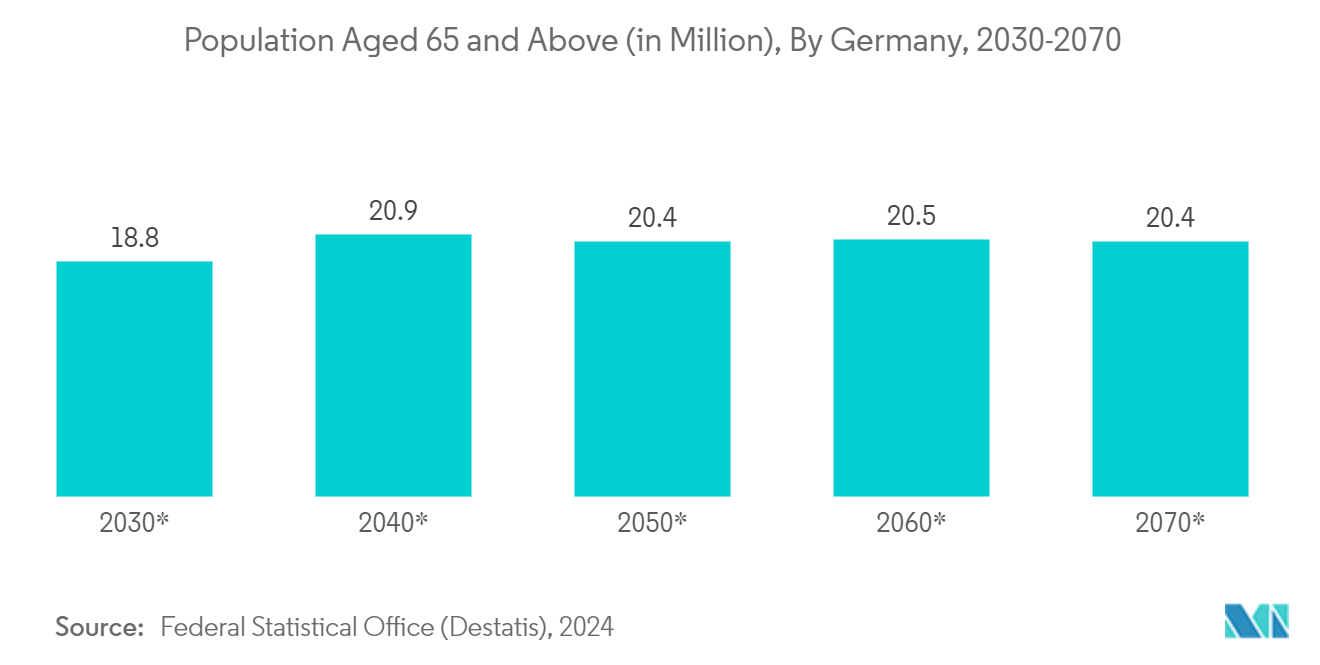Market Trends of Germany Magnetic Resonance Imaging Industry
The Ultra-high Field MRI Segment is Expected to Hold a Significant Market Share Over the Forecast Period
MRI systems with a field strength of 7 Tesla or higher are included in the ultra-high field MRI category. These scanners can see more of the body's finer details and offer quicker scan times with high sensitivity and specificity. The ultra-high field MRI segment is expected to grow during the forecast period with the increasing research advancements and the growing adoption of these systems.
German researchers have conducted studies shedding light on the rising technology and increasing acceptance of ultra-high field MRI systems. These studies aimed to raise awareness about the potential applications of MRI systems with ultra-high field strength, propelling the segment's growth. For instance, a study published in April 2023 in the Journal of Magnetic Resonance Materials in Physics, Biology, and Medicine concluded the promise of 14-tesla MRI systems and their envisioned role in German healthcare and research, which is expected to drive the segment's growth.
A study published in the Journal of Magnetic Resonance Materials in Physics, Biology, and Medicine in August 2022 highlighted the potential applications of ultra-high-field MRI systems with the strength of more than 7 Tesla for MRI-targeted biopsies in prostate cancer. The study further stated that the large field-of-view and low-flip-angle anatomical 3D imaging offered by the 7 T MRI has the potential to be used as a diagnostic tool with full strength to characterize different stages of the tumor to enable the onset and spatial distribution of metastatic spread.
Thus, such studies reveal the potential strength, efficacy, and vast applications of ultra-high field MRI systems for the better diagnosis of chronic diseases, which are expected to attract more market players to explore the technology and offer more ultra-high field MRI systems. These factors, along with the high demand for ultra-high field MRI systems, are expected to boost the segment's growth.
Ultra-high field MRI systems are being adopted to advance the research of magnetic imaging of the brain and other target organs and to gain a deeper understanding of the organ's function and the underlying diseases. These factors are expected to boost the demand for ultra-high field MRI systems and drive the segment's growth. In March 2023, at Otto von Guericke University Magdeburg, Germany, the most potent 7-Tesla magnetic resonance imaging (MRI) scanner, MAGNETOM Terra. X Impulse was launched. This advanced MRI system offers high-performance imaging for research, which is anticipated to boost segmental growth over the forecast period.
Therefore, the ultra-high field MRI segment is expected to witness significant growth over the forecast period owing to the rising number of research studies, high efficacy, and potential to serve as an advanced diagnosis tool.

Neurology is Expected to Hold a Significant Market Share Over the Forecast Period
Neurological diseases such as multiple sclerosis, brain tumors, Alzheimer's, and dementia are typically diagnosed using MRI technology. The increasing prevalence of these disorders drives the demand for advanced diagnostic tools, contributing to the growth of the neurology segment. Additionally, ongoing research and development in MRI technology continue to enhance diagnostic accuracy and patient outcomes.
The significant burden of neurological diseases is expected to increase the demand for MRI systems to diagnose and research the disease, which is likely to boost segmental growth. For instance, as per the data published by the Globocan in May 2024, there were 7,955 cases recorded in Germany for brain and central nervous system cancer. Such a vast patient base of dementia in Germany is expected to increase the demand for MRI systems for diagnosis, with more research studies being conducted to better understand disease development. This is expected to drive the segment's growth.
Research studies have highlighted the increasing technological advancements in MRI for neurological disease diagnosis, which are expected to attract more growth opportunities for the segment. For instance, a study published in the journal NeuroImage Clinical in May 2023 demonstrated the high potential of automated methods in MRI data, which can potentially assist physicians in diagnosing dementia and orphan diseases besides frequent syndromes such as Alzheimer's disease. Such studies can improve the diagnosis and the timely detection of sophisticated neurological diseases. These factors are expected to meet the diagnosis needs of patients, driving the segment's growth.
A study published in the Frontiers in Aging Neuroscience in October 2022 demonstrated that the manual metric MRI measurements enabled the diagnosis of substantia-innominata atrophy in dementia patients with a psychiatric onset. The study stated that the MRI measurements revealed that substantia-innominata in patients with dementia with Lewy bodies showed more atrophies than in the patients with initial mild cognitive impairment. Such findings can be useful for diagnosing the psychiatric onset of dementia, increasing the demand for MRI for dementia and timely diagnosis.
Therefore, the neurology segment is expected to witness significant growth over the forecast period due to factors such as the high burden of neurological disorders and advancing research.


